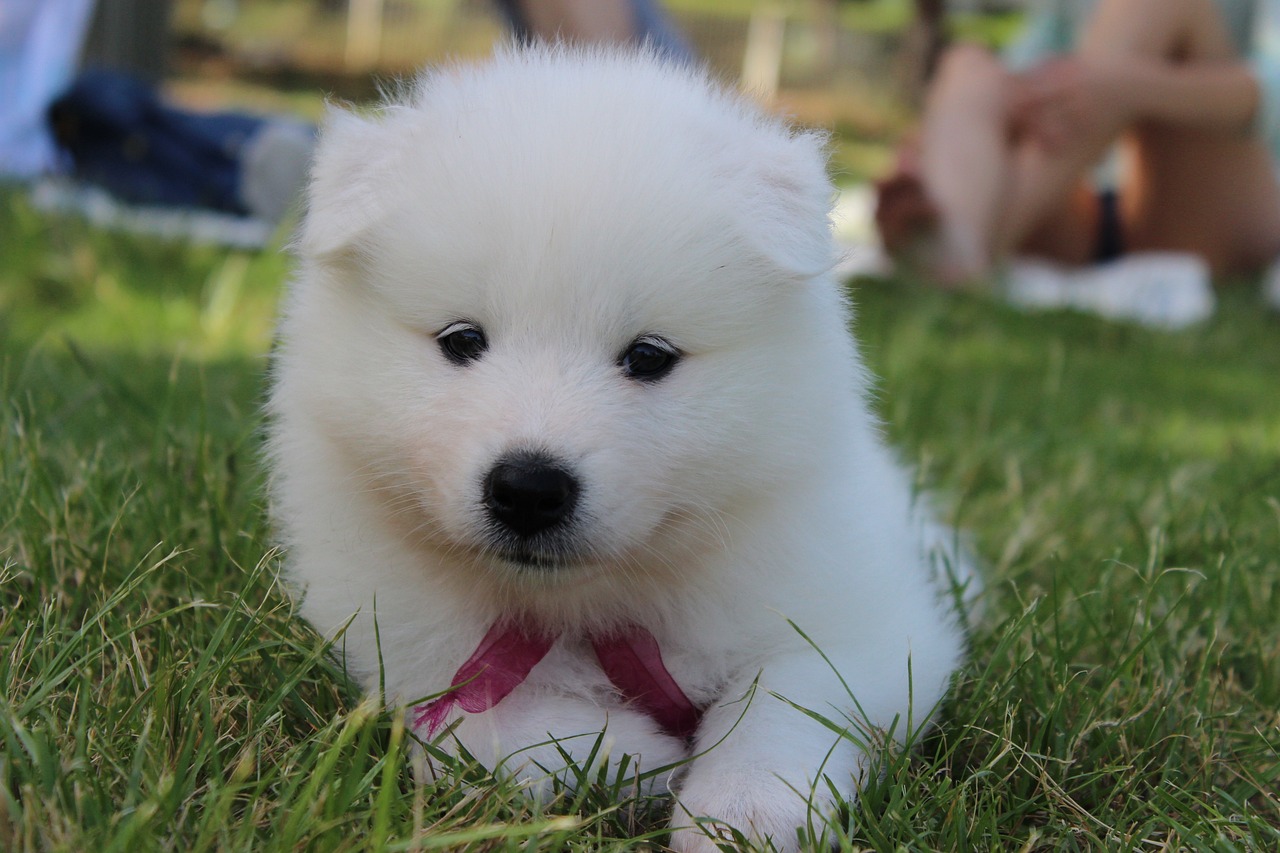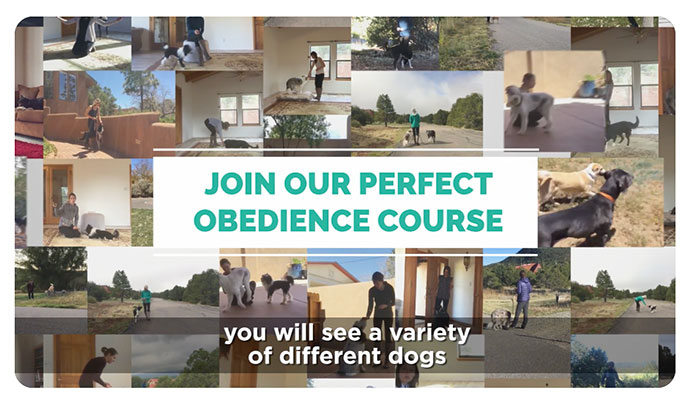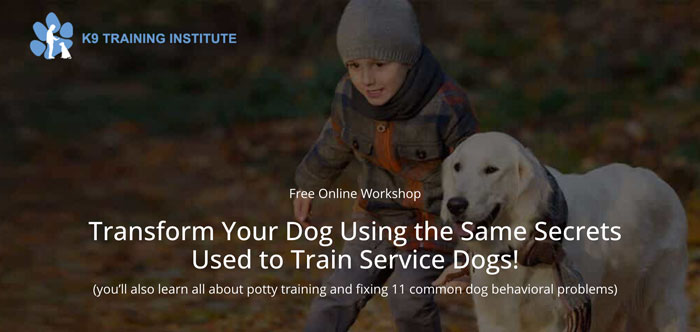Socializing a Samoyed puppy is an essential part of their upbringing, ensuring that they grow into well-adjusted and sociable adults. The Samoyed breed is known for its friendly and outgoing disposition, but proper socialization is crucial for nurturing these innate traits.
The Right Ways to Socialize a Samoyed Puppy

Below is a guide on the correct approaches to socializing your Samoyed puppy:
1. Start Early:
- Introduce your Samoyed puppy to different sights, sounds, and experiences as early as possible. The prime time for socialization is between 3 and 16 weeks of age.
2. Positive Reinforcement:
- Always use positive reinforcement techniques such as treats, toys, and praise to make new experiences enjoyable for your Samoyed puppy.
3. Controlled Environments:
- Initially expose your Samoyed puppy to new settings in a controlled environment. Gradually introduce more variables as they become more comfortable.
4. Meet and Greet:
- Arrange for your Samoyed puppy to meet various people, including children, seniors, and people wearing different types of clothing (e.g., uniforms, hats).
5. Multi-Species Exposure:
- If possible, safely introduce your Samoyed puppy to other animals such as cats, rabbits, and birds, to make them more adaptable to different types of pets.
6. Socialization Classes:
- Enroll your Samoyed puppy in puppy socialization classes. These classes provide an excellent opportunity for controlled interaction with other puppies and people.
7. Leash Training:
- Start leash training early to prepare your Samoyed puppy for walks where they’ll encounter various stimuli. This enables you to have better control during socialization outings.
8. Expose to Different Locations:
- Take your Samoyed puppy to various places like parks, pet stores, and friends’ homes to expose them to different environments.
9. Car Rides:
- Acquaint your Samoyed puppy with car travel to prepare them for vet visits, outings, or vacations. This will make them more adaptable to motion and change.
10. Handle with Care:
- Get your Samoyed puppy accustomed to being touched. Handle their paws, ears, and mouth gently so they become comfortable with future grooming and veterinary exams.
11. Teach Basic Commands:
- Teaching basic commands like ‘Sit,’ ‘Stay,’ and ‘Come’ not only helps in obedience but also keeps your Samoyed puppy focused during social interactions.
12. Introduce Household Noises:
- Play recorded sounds of vacuums, doorbells, and other household noises at a low volume to help your Samoyed puppy acclimate to domestic life.
13. Texture Familiarization:
- Let your Samoyed puppy walk on different surfaces like grass, tile, and carpet. This will help them become comfortable with various textures.
14. Object Familiarization:
- Show your Samoyed puppy common objects like umbrellas, bags, and bicycles so they won’t be fearful or reactive when encountering these items in the future.
15. Monitor and Adapt:
- Keep a close eye on your Samoyed puppy’s reactions during socialization. If they seem overwhelmed or scared, dial back and try a less stimulating experience.
16. Involve Family Members:
- Involve different family members in the socialization process to ensure your Samoyed puppy becomes accustomed to taking commands from multiple people.
17. Socialization Beyond Puppyhood:
- While the initial months are crucial, continue to expose your Samoyed puppy to new experiences as they grow into adulthood to keep their socialization skills sharp.
18. Vet Visits:
- Make vet visits as pleasant as possible for your Samoyed puppy. Bring their favorite toy or treat to create a positive association.
19. Safe Social Media Posting:
- If you’re sharing your Samoyed puppy’s socialization journey online, make sure you’re cautious about revealing any identifiable locations to ensure your puppy’s safety.
20. Enroll in a Puppy Training Program:
- Finally, consider enrolling your Samoyed puppy in a structured obedience training program. A guided program will provide consistent, professional advice and practical exercises to help you effectively socialize your Samoyed. I recommend either SpiritDog’s Ultimate Puppy Training Program or K9 Training Institute’s Dog Masterclass for comprehensive, step-by-step guidance.
The Wrong Ways to Socialize a Samoyed Puppy
 When it comes to socializing a Samoyed puppy, there are certainly right ways to go about it, but also many wrong ways that can lead to behavioral issues or unnecessary stress for your dog. This article outlines the incorrect methods often employed by dog owners, so you can avoid these pitfalls in the crucial early stages of your Samoyed puppy’s life.
When it comes to socializing a Samoyed puppy, there are certainly right ways to go about it, but also many wrong ways that can lead to behavioral issues or unnecessary stress for your dog. This article outlines the incorrect methods often employed by dog owners, so you can avoid these pitfalls in the crucial early stages of your Samoyed puppy’s life.
1. Delaying Socialization:
- Waiting too long to start socializing your Samoyed puppy can lead to behavioral issues. The critical socialization period starts to close around 16 weeks, so delaying can make it more challenging to acclimate your dog to new experiences.
2. Overwhelming Situations:
- Avoid throwing your Samoyed puppy into highly stimulating situations that can overwhelm them. Overexposure can backfire, making them fearful or anxious.
3. Forced Interactions:
- Never force your Samoyed puppy to interact with people or animals if they show signs of fear or discomfort. This can lead to trauma and future reactivity issues.
4. Using Negative Reinforcement:
- Employing punishment or negative reinforcement during socialization can create negative associations for your Samoyed puppy, making them anxious or fearful in similar future situations.
5. Inconsistent Exposure:
- Random, sporadic exposure to new experiences can confuse your Samoyed puppy. Consistency is key; don’t introduce too many variables at once.
6. Socializing Only with Dogs:
- Limiting your Samoyed puppy’s interactions to only dogs can result in poor social skills with humans and other animals.
7. Unsupervised Play:
- Allowing your Samoyed puppy to play unsupervised with unknown dogs can be risky. Not all dogs are friendly or suitable playmates.
8. Lack of Leash Training:
- Failing to leash-train your Samoyed puppy before taking them out can result in poor control in social situations, leading to potential accidents or conflicts.
9. Avoiding Strangers:
- Not letting your Samoyed puppy interact with a variety of people can result in a dog that’s skittish or fearful around strangers.
10. Too Much Too Soon:
- Trying to cram a ton of new experiences into a short period can be stressful for your Samoyed puppy. Socialization should be a gradual process.
11. Neglecting Basic Commands:
- Not teaching your Samoyed puppy basic commands can result in poor control during social situations, leading to potential conflicts or unsafe situations.
12. Skipping the Vet:
- Not socializing your Samoyed puppy to the vet’s office can make future visits stressful or traumatic.
13. Ignoring Your Puppy’s Signals:
- Failing to recognize signs of stress or discomfort in your Samoyed puppy can lead to negative experiences that may have long-lasting impacts.
14. Poor Timing:
- Socializing a Samoyed puppy when they are tired, hungry, or cranky can result in a negative experience, making it harder to socialize them in the future.
15. Too Much Freedom:
- Allowing your Samoyed puppy too much freedom during socialization can lead to undesirable behaviors like jumping up on people or rushing up to unknown dogs.
16. Relying Solely on Dog Parks:
- While dog parks can be useful, relying solely on them for socialization can expose your Samoyed puppy to risks like disease, fights, and poor social behavior from other dogs.
17. No Exposure to Different Environments:
- Failing to expose your Samoyed puppy to different environments, sounds, and textures can result in a dog that’s uncomfortable or anxious in new settings.
18. No People Training:
- Socialization is also about training people how to interact with your Samoyed puppy. Failing to instruct people on the right way to approach or touch your puppy can lead to negative experiences.
19. Forgetting About Puppy Classes:
- Overlooking the benefits of a structured puppy class means you miss out on a controlled environment for socialization and basic training.
20. Failing to Continue Socialization:
- Thinking that socialization is only for puppies and neglecting to continue exposing your adult Samoyed to new experiences can lead to regression in social behavior.
Consider Online Dog Training for Your Samoyed Puppy
Our 2 favorite online courses are:
1. SpiritDog’s “Perfect Obedience” Course
The Perfect Dog Obedience Bundle is an online dog training program designed to help dog owners achieve well-behaved pets. The comprehensive course covers basic obedience, and loose leash walking, and includes bonus mini-courses on training habits and rewards, stopping jumping, and separation anxiety solutions. With lifetime access to expert trainers for personalized feedback and a 60-day money-back guarantee, this course aims to provide effective, accessible training for a variety of dog behavior issues.
2. K9 Training Institute’s “Dog Masterclass”
More than just an obedience course, this more comprehensive training course tackles any behavior problem you might face with your dog.
Avoiding these common mistakes can help you raise a well-adjusted Samoyed puppy who is confident and happy. Socialization is not a one-time event but a continuous process throughout your dog’s life. Make sure you’re doing it the right way from the start to set your Samoyed puppy up for success.


 Toledo, United States.
Toledo, United States.
